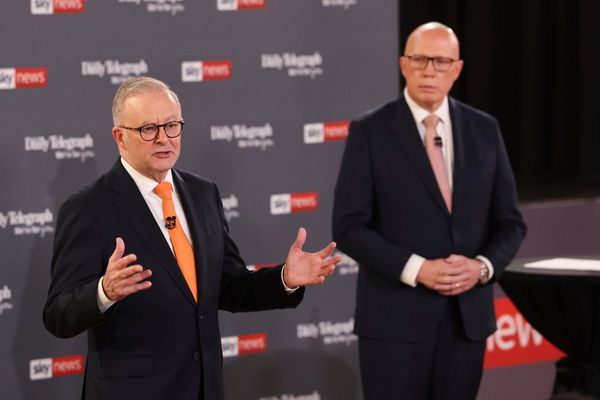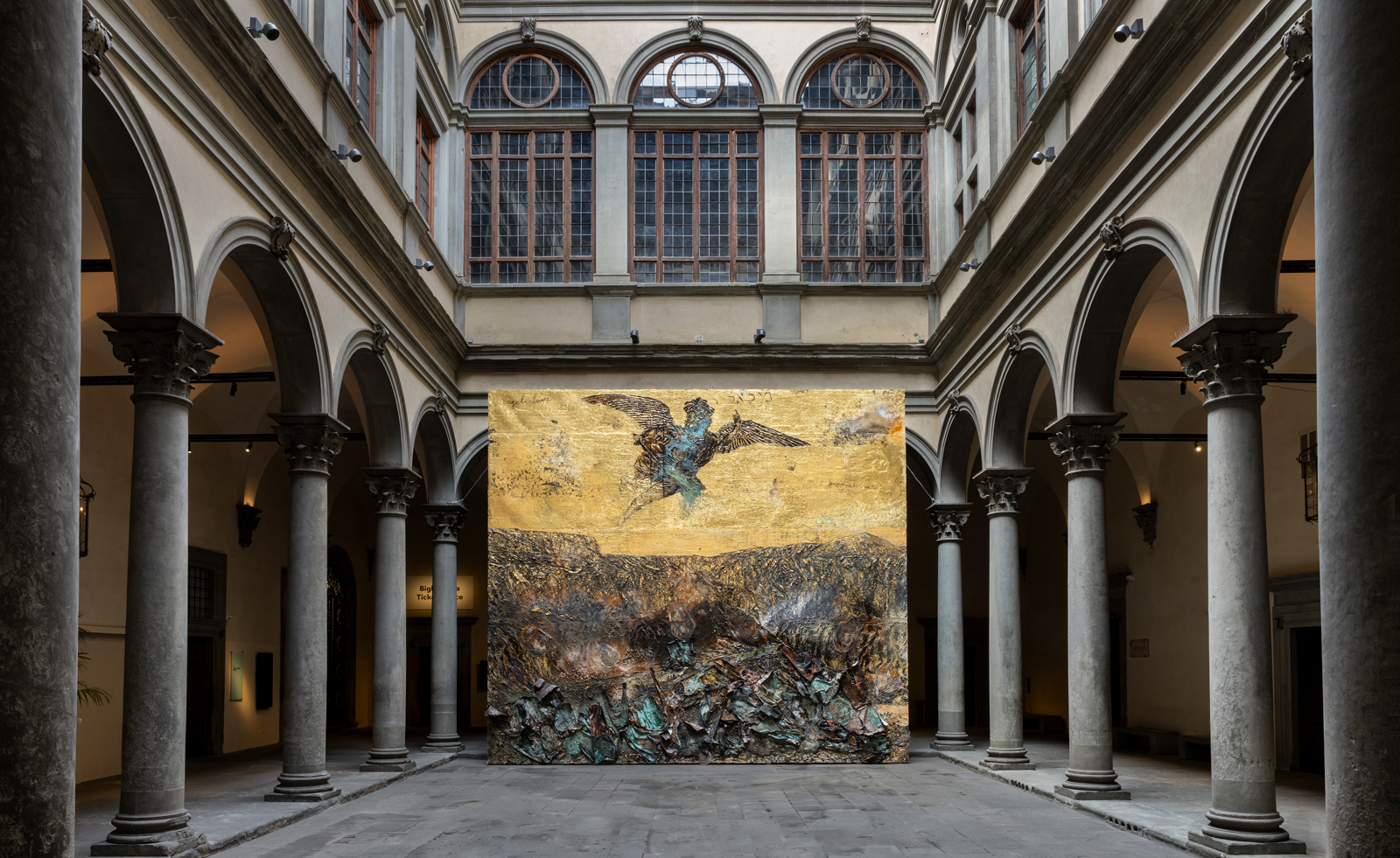
Anselm Kiefer fell in love with Palazzo Strozzi at first sight. During a school trip to Florence in the late 1960s, a teenage Kiefer was immediately taken by what he describes as the palace’s “minimal allure”, noting its pure symmetry and modest adornment in his diary at the time. Ironically, “minimal” could never be said of the body of work Kiefer would produce over the next fifty years, becoming, in the process, a giant of contemporary art with works of immense scale and ambition. Now a new exhibition, Fallen Angels, sees the German artist return to the Palazzo that made such a lasting impression, with a combination of old and new works that reflect the building’s unique position within the Florentine Renaissance.
Unlike the lavish opulence of the Sala dello Scrutinio at Venice's Palazzo Ducale (where Kiefer exhibited in 2022), Strozzi’s so-called minimal aura offers Kiefer a more harmonious intervention. In the central courtyard, Engelssturz (Fall of the Angel, 2022-23), a seven metre high work created specifically for the space, depicts Archangel Michael against a golden backdrop, pointing towards the open sky as vanquished rebel angels, rendered three dimensional by discarded items of clothing that protrude from the canvas, lie at his feet. Typically for Kiefer, who embraces metamorphosis in his paintings, the work is brazenly left exposed to the elements, where, over the course of the exhibition, its gold leaf and tactile surface will continuously transform.
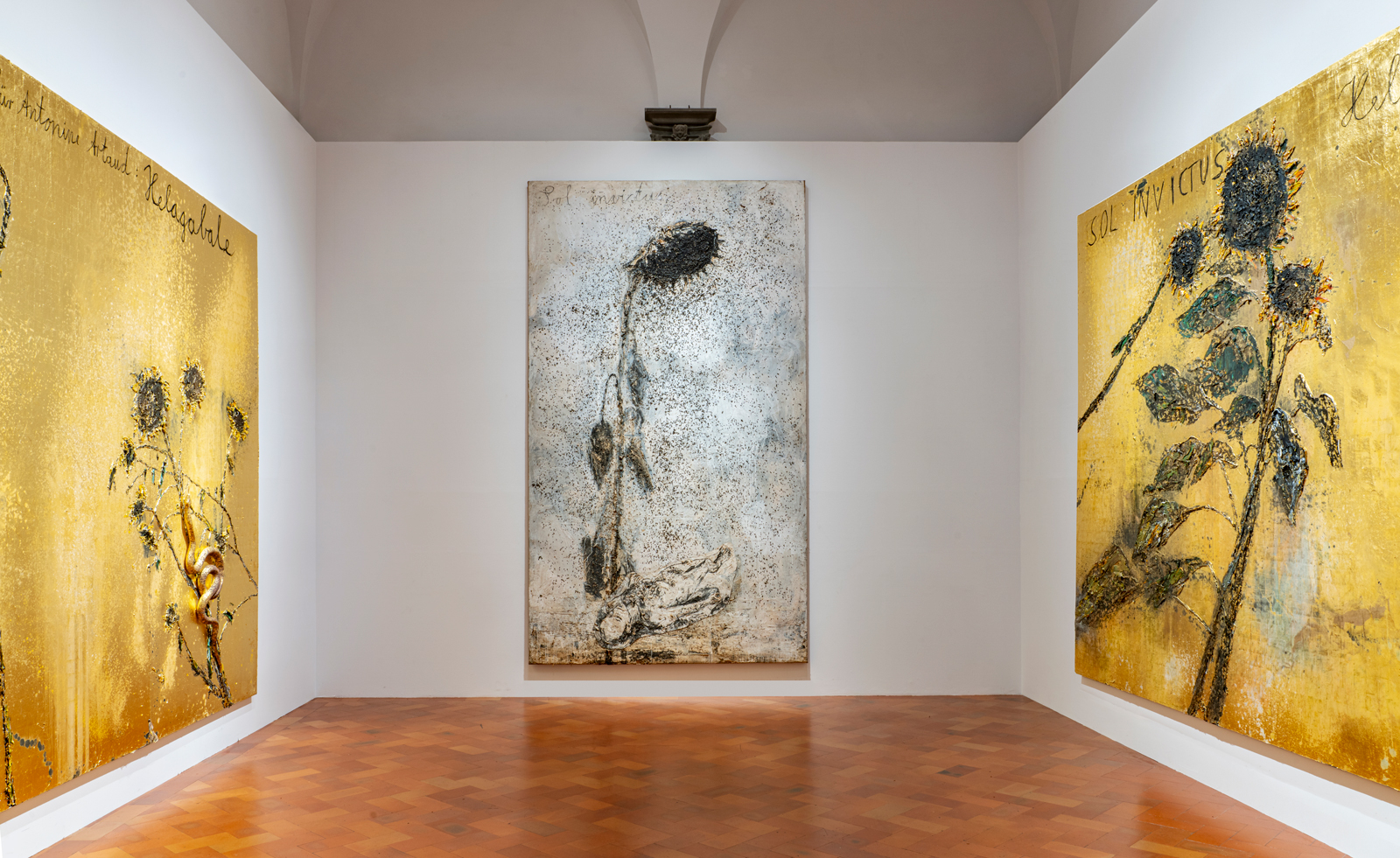
This timeless scene, painted by Renaissance masters like Raphael, provides the exhibition’s title as well as its leitmotif, one which contrasts virtue and rebellion, beauty and monstrosity, while asking whether these dichotomies can ever be reconciled. In works like Luzifer (2012-2023), the wing of an aeroplane jutting out from the canvas is suggestive of both destruction and heavenly ascent. But Kiefer’s most dramatic mise-en-scène is Verstrahlte Bilder (Irradiated Paintings, 1983– 2023), sixty paintings covering the walls and ceiling of the palazzo’s biggest room. A table-like mirror in the floor’s centre reflects the viewer and creates an illusion of paintings covering the floor - a veritable horror vacui. These scarred and decaying canvases, some of which have literally been exposed to nuclear radiation, embody the paradoxically symbiotic relationship between destruction and creation.
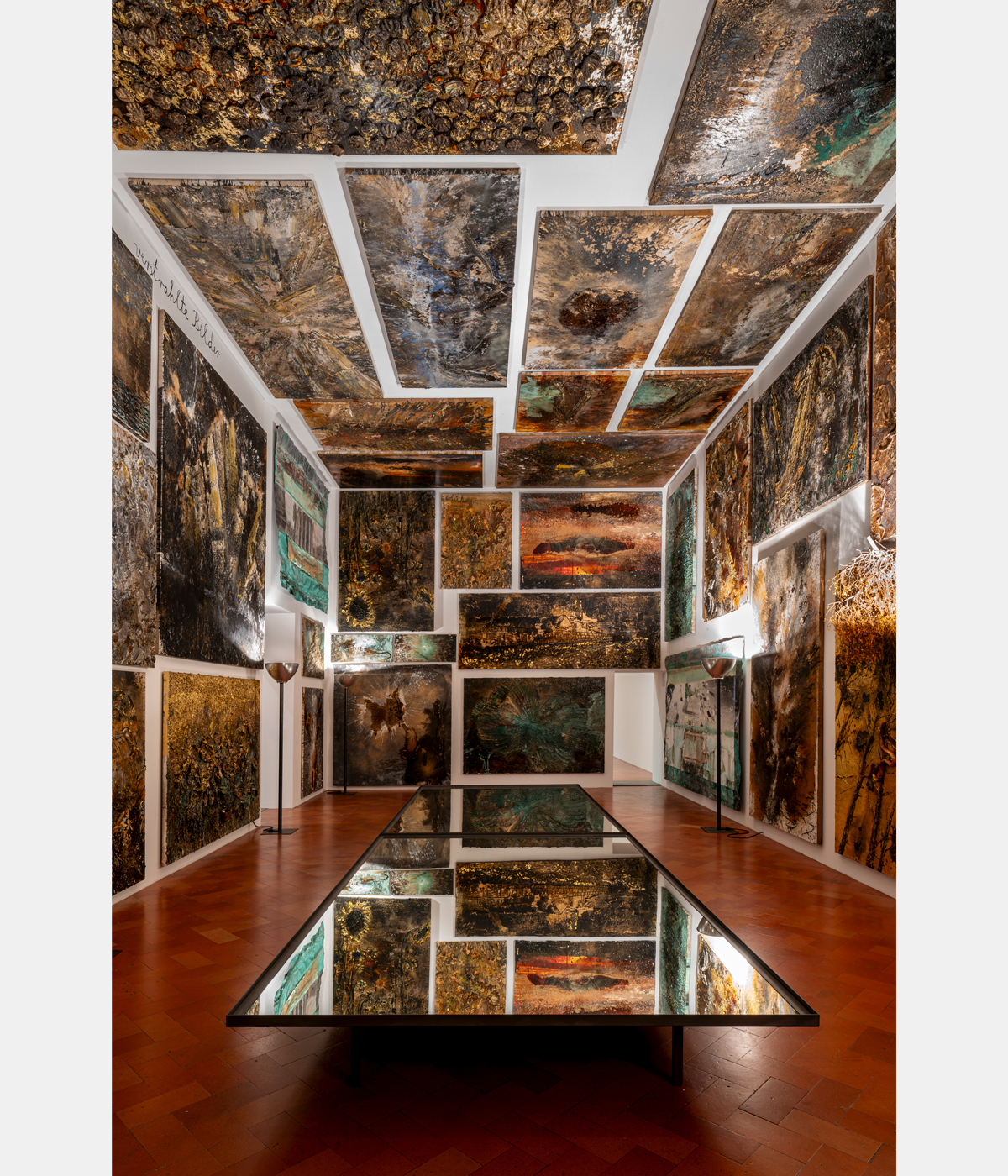
Beyond Kiefer’s habitual references to mythology, religion, philosophy and literature, the exhibition is perhaps most compelling in its engagement with the materiality of the palazzo. Gold leaf abounds, particularly in a room dedicated to the Roman Emperor Heliogabalus featuring Kiefer’s signature sunflowers. Despite having its roots in the Byzantine period, gold leaf became a signature of the Florentine Renaissance, and continues to be manufactured in the city. In his vitrine works, Kiefer’s combination of lead (En Sof, 2016) and gold (Danae, 2016) - together with his wider use of fire and electrolysis - alludes to alchemical transformation, a practice for which Florence was famed during the Renaissance and one that Kiefer readily embraces in his work.
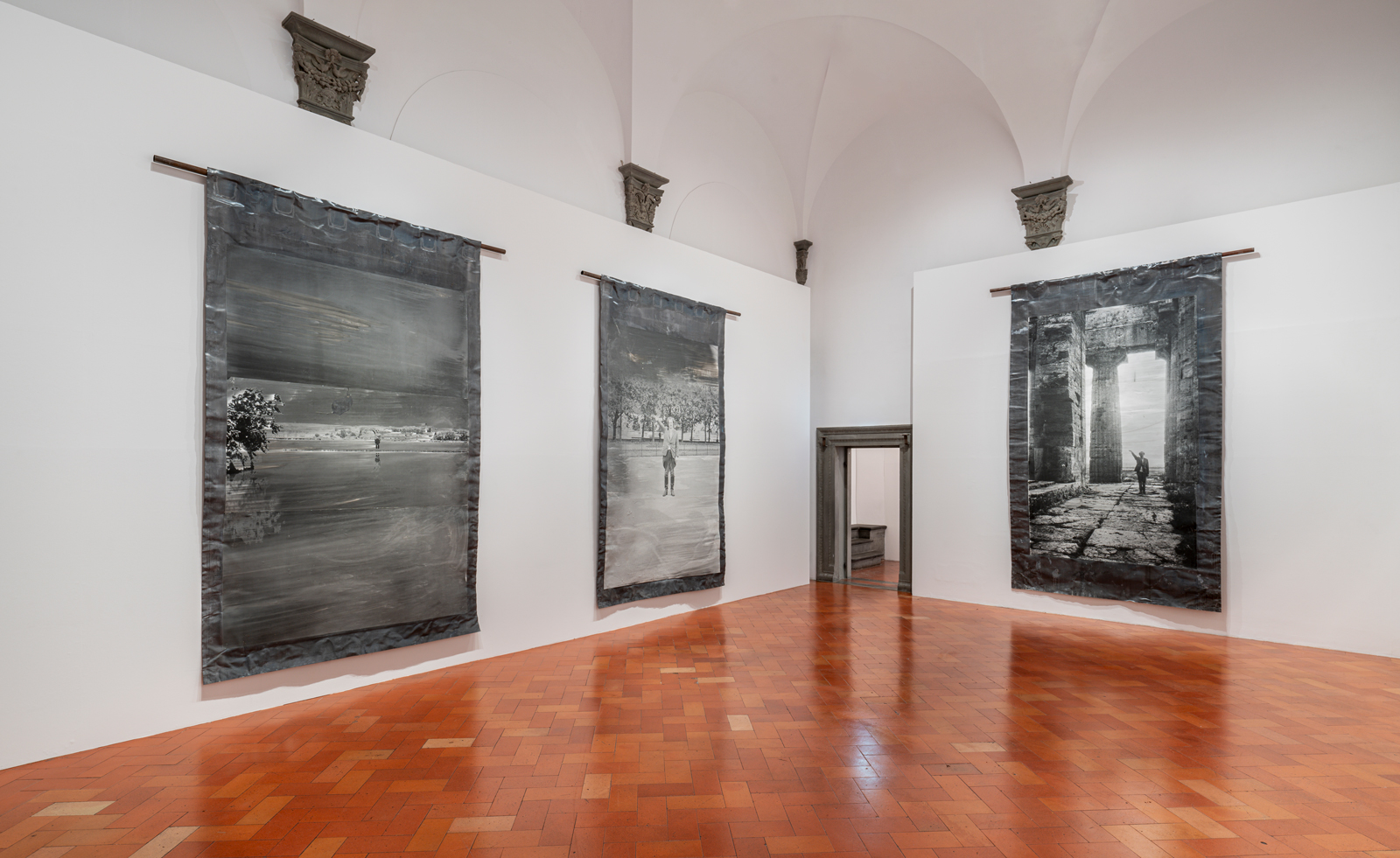
A refusal of limits pervades this exhibition by the German master, a sense of transience and transmutation, a surrendering to sublime forces. These sentiments are perhaps best articulated by the words of Italian poet Salvatore Quasimodo, drawn on walls of the final room in Kiefer’s typical cursive handwriting: “Everyone stands alone at the heart of the world / pierced by a ray of sunlight / and suddenly it’s evening.”
Anselm Kiefer's 'Fallen Angles' is at Palazzo Strozzi from 22 March to 21 July 2024
